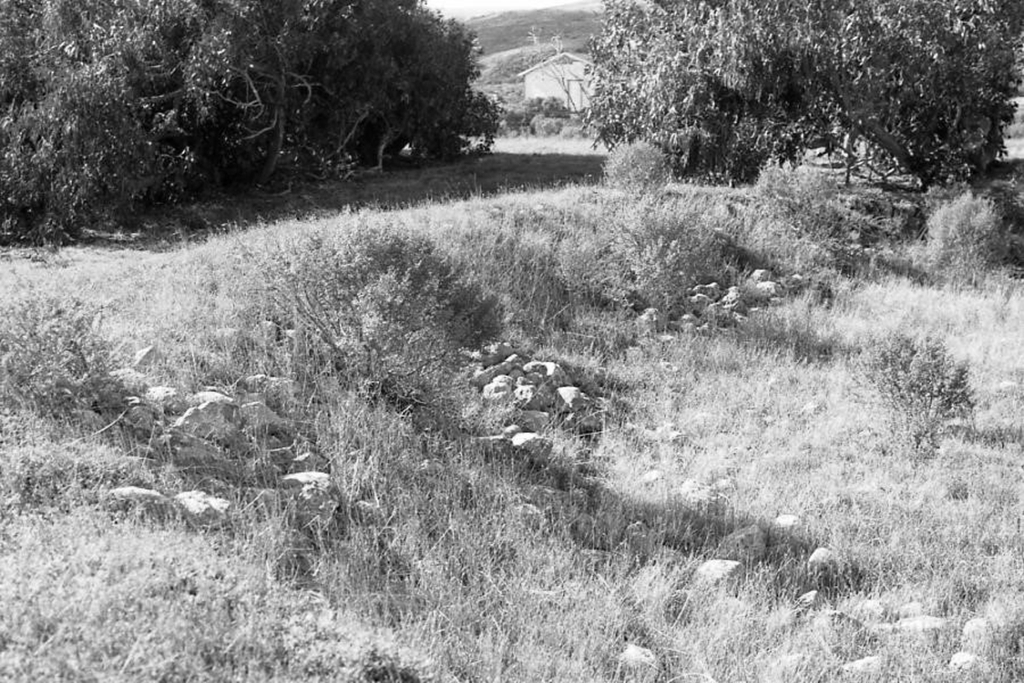
Water is a precious commodity on a livestock ranch and even more so on an island. While the island has numerous perennial streams, water for domestic and livestock use had to be developed to provide adequate and healthy supplies. Other than a surface supply from Water Canyon, tapped by the Mores in the 1870s, developed sources of water on the island include only a remote spring and a system of wells located near the ranch complex.
The More family developed a water system in the early 1870s to supply the ranch complex. A dam in Water Canyon, apparently no longer existing, impounded water that was delivered in riveted iron pipe for a distance of two miles.
A circular, rock-lined reservoir at the ranch complex appears to have been fed by this line as well. Remnants of the original pipeline remain in Water Canyon, and the old reservoir is a landmark near the Russ Vail house, east of the south end of the eucalyptus windbreak. Part of the reservoir wall has been destroyed, and vegetation, including a eucalyptus tree, is encroaching.
Vail & Vickers developed most of its cattle watering systems in the vicinity of the main ranch and Carrington Point. On the south side of the island, one small system was developed at Clapp Spring. While the island was well watered by natural sources (perennial streams), these sites needed development because of concentrations of cattle and lack of natural sources.
The major source of water for ranch operations is located in the appropriately named Windmill Canyon west of the ranch house. At an unknown date before the 1930s someone drilled or dug a well and installed a windmill and a redwood storage tank. Water from this reliable source fed by gravity the ranch houses, outbuildings, and troughs in the ranch complex.
For some time the Vails used a tractor or old Army vehicle on jacks to pump water from the well. Later the Vails built a pump house. As of 1984, two hand-dug wells, measuring four by four feet and 40 feet deep, were present; one was active, with a storage tank in place. In the late 1980s the NPS replaced and updated the well, windmill, and pump system. Water is piped from the sources in Windmill Canyon also to the NPS housing, campground, and main ranch residences.
Clapp Spring, near the top of San Augustin Canyon, produces a fine and reliable water source. Water from the spring runs by gravity through a pipe from the springhouse at the source to a concrete watering trough on the Sierra Pablo road. No one knows who found and developed the spring. Clapp Spring allegedly got its name from an incident when its pure water cured an old cowboy's venereal disease. True or not, the water is excellent. Ranch workers bottled it in five-gallon containers for drinking water.
For more detailed historical information and citations, please refer to the Historic Resource Study: Island Legacies - A History of the Islands within Channel Islands National Park
Is there something we missed for this itinerary?
Itineraries across USA


















































